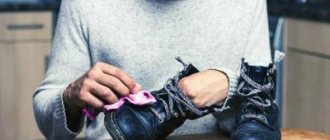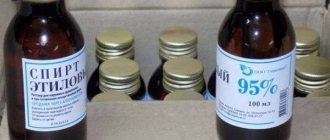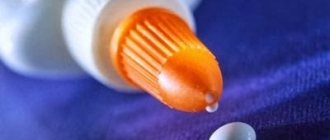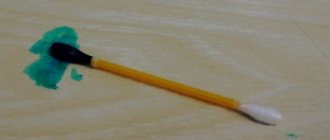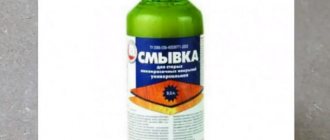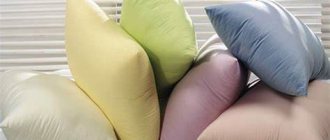Removing stubborn glue stains from various surfaces is not an easy task, especially if its composition contains only high-quality components. Natural or chemical substances can act as assistants. They will help dissolve the glue stain, which after all the manipulations will be easy to remove with a regular rag or sponge.
Solvent
The arsenal for fighting stubborn stains should include: water, alcohol, acetone, soda, vinegar, oil. Depending on the nature of the contamination, these products are combined with each other or one of them is used.
A few rules for removing fast-acting adhesive
Super glue was invented more than 70 years ago, and many varieties of this substance are currently produced. They quickly harden and firmly connect almost any materials, from metal to leather. To clean the glue moment, you need to react in a timely manner:
- straighten the clothes and prevent the fabric from sticking together;
- wet the stain with water;
- try scraping it off with a knife.
If the stain does not go away immediately, do not worry, after several washes it will become almost invisible. To completely get rid of traces of glue, try wiping the fabric with purified lighter gasoline or buy a bottle of dimexide at the pharmacy and use it in the same way.
Other tips: how to remove mold from clothes
https://youtube.com/watch?v=ONIB9vmKHFc
Top 3 special tools
In some situations, homemade recipes may not help . Then special drugs will come to the rescue.
Grass Antigraffiti
This product, Grass Antigraffiti, is an effective product for removing traces of glue, chewing gum, tape, etc.
It contains:
The cost of a 0.6 liter bottle. with a sprayer - about 300 rubles. The drug is also available in 5 kg canisters.
Advantages:
Flaws:
Duty Universal
The drug is a professional remover of glue and adhesive base of stickers, tape, etc. The product has an enhanced effect and is produced in Russia.
Compound:
Advantages:
Minuses:
Mellerud
How to use:
The product has good reviews. Its disadvantage is the high cost for a small volume and the need in some cases to repeat the processing.
Universal method
If glue gets on any product, you need to carefully blot the stained area with a dry paper napkin. A paper handkerchief will do.
What you will need
A dry stain can be cleaned off with a sharp knife or nail file.
The procedure must be performed carefully, otherwise there is a risk of damaging the canvas
Universal means include:
- hydrogen peroxide - necessary to remove yellow glue marks from white canvases;
- laundry soap is used as a means for soaking with preliminary rubbing of glue stains;
- washing powder - soaking and main wash;
- solvents without acetone, paint removers.
When using aggressive chemicals to clean defect areas, such as solvents, you need to test it on the wrong side of the product in an inconspicuous place.
They should not be used on delicate fabrics. There is no need to try to remove marks with wet wipes, this will only make the situation worse.
How to wash?
From the skin
When working with super glue, it often gets on the skin of your hands. If the adhesive gets on your skin, you can’t just get rid of it; you can’t remove it with soapy water. There are three ways to remove the super-substance from the skin of your hands.
For this, as a rule, they use:
- acetone: rub the contaminated area well, and then wash your hands with soap;
- pumice stone: steam your hands and then gently rub the area with pumice stone;
- table salt: wet your hands and pour a large spoonful of salt into your palms, rubbing it until the dirt comes off.
These methods can seriously damage the skin of your hands; after manipulation, you need to apply lotion or hand cream to your skin.
From metal
It is very difficult to remove the super-substance from metal. You can try to scrub the metal surface using acetone or another solvent containing volatile substances, but they do not have time to adhere to the material.
To completely get rid of dirt, apply solvent or acetone to a cotton pad or thick cotton cloth, apply it to the stained area, and stick tape on top. As a result, an airtight environment is created, the adhesive inside will heat up and its remains can be easily removed after removing the tape.
From linoleum
Super glue often ends up on linoleum. To remove it, you should resort to chemical solvents. To clean the surface, choose “Super Moment Anti-Glue”, “Anti-Glue” or “Contact”. When they are applied to a surface, the glue begins to dissolve and turn into a rubber-like substance that is easily removed.
If you don’t have the time or opportunity to run to the store, gasoline is used to remove glue from linoleum. If the stain is already old, you need to wait a few minutes until the glue begins to dissolve. Residues are removed with dry wipes. Sometimes it cannot be removed the first time, then the procedure should be repeated.
When working with gasoline, you should follow safety precautions, as the substance is flammable. There should be no children in the room while working. After working with gasoline, the surface is washed with water.
When buying linoleum, you should read the instructions and find out what products are suitable for its surface. If you have a small piece of linoleum, you can do a test test on it: spread it with glue, and then try to remove it using different means. To clean linoleum, you can use gasoline or ammonia. Do not use acetone for cleaning: it can damage the surface.
From plastic
Very often the question arises of how to remove traces of glue from plastic surfaces. When working with this product, you should be very careful and try to immediately remove drops of glue from the plastic with a regular cloth. After removing the stain, wash the surface with dishwashing detergent.
Plastic does not tolerate temperature changes well, and can also be damaged when using certain chemical solvents, so do not use acetone or gasoline for plastic surfaces.
If the glue on the plastic surface has already dried, you can try to cut it off very carefully. You can also use Dimethyl Sulfoxide to remove adhesive from plastic.
You can buy it at any pharmacy
You can also use Dimethyl Sulfoxide to remove adhesive from plastic. You can buy it at any pharmacy.
From glass
As with any other surface, it is always easier to remove fresh dirt from glass: just wipe it with a cloth.
For glue that has dried on the base, use:
- cleaner: it is applied to the glass, after a few minutes it is removed with a knife;
- white spirit: it is applied with a damp disc to the glass, after 15 minutes the softened glue is removed with a stationery knife;
- vegetable oil: apply it for 1 hour, then remove it with a plastic spatula or spatula;
- liquid soap, dish soap: add a little composition to water, apply the soap solution to the glass and rinse off with a dish brush.
You can also remove glue from glass using ammonia and dishwashing detergent: take them in equal proportions and apply the mixture to the stain for 1 hour. After this, the contamination is removed and the glass is wiped with a solution of ammonia in the ratio: 1 tbsp. l alcohol per 0.5 l. water.
Removing the glue
If the stain is fresh, there is a greater chance of removing it. Before you begin the actual cleansing, follow these steps:
- Remove excess adhesive from the surface of the fabric. If it dries, try to gently scrape off the stain using a sharp object.
- Prepare the necessary remedy.
- Do a test. Apply the remover to a small area of clothing from the wrong side, invisible to others. This step is necessary to be on the safe side in case the fabric is damaged by the product.
There are many methods for removing stains, depending on the composition of the adhesive mass and the type of material on which it came into contact.
glue
Let's look at the most common cases of pollution and methods to combat them.
PVA glue
If PVA gets on your clothing, you must do the following:
- Turn the item inside out and run under running warm water. If the stain does not go away, then use one of the options:
- Rub the damaged area with soap or dishwashing liquid. Then clean with a soft brush.
- Soak a cotton swab in table vinegar or a liquid containing alcohol. Wipe off the dirt.
- After completing the above steps, soak the damaged clothing in the washing solution for a couple of hours.
- Rinse well.
- Wash the item in powder and rinse.
As a rule, once a fabric is contaminated with PVA, the stain can be easily removed without any unpleasant consequences.
Glue Moment
You need to know that it is unlikely that it will be possible to remove long-standing dried stains. But a fresh stain can be successfully removed using a sponge soaked in gasoline. A dried stain after recent contamination can be removed using the following means:
- For rough fabrics (jeans and others):
- Prepare the solution. Mix vinegar with water in a 1:2 ratio. Then soak a cotton pad in the mixture and place it on the stain. Several such procedures can be carried out.
- Soak a cloth in varnish remover and apply to the Moment stain.
- For wool, velvet or silk items: dilute 20 g of citric acid or 1 tablespoon in 100 ml of water. 70% vinegar.
You can use the store-bought product “Super Moment Anti-Glue”. It helps eliminate problems without much effort on any type of fabric. Wipe off the dirt with a rag soaked in the solution. Then you can repeat the steps several more times. After performing one of the Moment elimination methods, wash your clothes and rinse them in cool water.
Second and other types of superglue
Such contaminants are very difficult to remove. For natural fabrics, you can use the second method above - dissolving vinegar in water.
Jeans and other rough fabrics are more durable and less susceptible to possible damage. For such materials, the following options from Secunda glue are suitable:
- Solvent or acetone. Soak a sponge or toothbrush in one of these products, then scrub and rinse the cloth in cold water.
- Run the damaged area of fabric under running hot water or place it in the freezer. As a result, the crust will crack, and you can carefully scrape it off using a nail file, pumice stone or other available material.
- Buy Dimexide at the pharmacy. Apply it to the damaged area. Rub well. Then lather with laundry soap and rinse.
- Take it to the dry cleaner. Professionals can handle this durable adhesive without damaging the fabric or design.
Other types of glue
- Silicate can be removed in the following way: soak the item in warm water with the addition of powder and two tablespoons of soda. After three hours, scrub the dirt with a brush and wash.
- Stationery can be easily removed by washing the item with laundry soap in cold water.
- The carpentry disappears after soaking the fabric in a warm soapy solution. If there is an old crust, then you need to scrape it off, as in the video, rub it with a rough cloth, and then wash it.
https://youtube.com/watch?v=ONIB9vmKHFc
How to dissolve stubborn adhesives?
Many people do not know how to dissolve Titan glue, which belongs to the class of very resistant and difficult to remove compounds based on acrylic copolymers. Effective means that help dissolve it are concentrated plumbing acid, gasoline, dimethyl ketone, turpentine, methylbenzene, ethyl acetate. After soaking in these products, it is necessary to remove the residues mechanically.
When choosing a method for dissolving epoxy glue, you should remember that this will have a significant impact on the performance properties of the final polymer. The addition of solvents helps reduce viscosity, and the strength and water resistance characteristics of the product deteriorate. Suitable for dilution are acetone and denatured alcohol, which can evaporate quickly without remaining in the resin.
When choosing a product to dissolve rubber or 88 glue in case of drying, you can choose gasoline, since it is included in their composition. Dilute the adhesive composition to the consistency of liquid sour cream so that it does not drain from the roller.
Key factors to consider when breeding:
- 1. Adding a solvent significantly reduces the viscosity and strength of the polymer.
- 2. The service life of the adhesive and its curing period are increased.
- 3. Dilution causes the resin to shrink, which increases microcracks.
- 4. The color of the polymer changes.
- 5. Increases fluidity on verticals.
Cleaning clothes from Moment glue
Recent Moment prints on things can be washed off with 72% laundry soap. Glue that has deeply saturated the fiber structure is removed as follows:
Treat the stain with acetone or pure gasoline. Moisten a napkin or cotton swab with any of the liquids and wipe off the dirt
After processing, the product should be washed. You can use white spirit for cleaning, but this product is more aggressive and you need to act carefully. Nail polish remover is also suitable for cleaning. Using a cotton swab with the product, soak the area contaminated with glue and leave for 20-30 minutes.
After exposure, wipe with a hard sponge and wash with detergent.
- Among gentle home methods, citric acid will help. Take 20 g of crystals and dilute them in 100 ml of water. Soak the blot in the solution and keep it there for 7-10 minutes. Then clean the glue with a stiff sponge or brush.
- Housewives successfully use the effect of cold or heat on glue. The fabric in the area of the glue spot is heated with a hairdryer or iron, and cooled in the refrigerator or with ice cubes. Due to temperature differences, the glue becomes brittle, and its traces can be cleaned off with a manicure file or pumice stone. After cleaning procedures, the item is washed. This method cannot be used on leather and silk materials.
- A cosmetic product such as a body scrub can also remove glue stains from clothes. It is distributed over the area of contamination, rubbed with a hard sponge or brush and washed off with water.
Washing clothes from PVA
In the question of how to remove PVA glue from clothes or any other fabric products, the following tips may be useful:
- The composition can be easily wiped off in warm water using a special brush and cleaning soap (laundry soap).
- If you have difficulties in how to remove PVA glue from clothes whose material is suede, then you should heat the water in a container to a boil and hold the item over it for several minutes. Traces of the composition are removed with a clean rag previously soaked in ammonia.
- If jeans or a cotton product are damaged, then before you begin to remove the stain from PVA glue, you should check whether the product will change color from alcohol. It is best to test on an inconspicuous area of fabric. You need to moisten a cotton pad and rub the stain a little.
It is worth considering that in the question of how best to wash PVA from clothes, you need to be extremely careful, since some substances can ruin the fabric. For denser materials, alcohol or solvent is the ideal solution, but for silk, satin or chintz it is better to choose another product. If a stain appears on delicate fabrics, it is better to put the product in the freezer for 40 minutes. This is the best way to remove stains from PVA glue, since you can easily remove the remains of the composition, which is brittle from exposure to low temperatures.
How to remove PVA?
Of all existing adhesives, PVA is the most susceptible to dissolution. The arsenal of tools that can be used to dissolve PVA glue includes the following materials:
- 1. hot soapy solution – when treating with this material, the surface should be washed with 9% acetic acid or 96% alcohol;
- 2. baking soda perfectly softens hardened residues; to get the result, you need to walk a hard sponge with soda over the PVA layer - it will be wiped off in a minute;
- 3. water softens the dried PVA clot, its soluble elements are separated from the emulsified suspension, the remains can be wiped off with a rag moistened with acetone, methanol, isobenzene or ethyl acetate.
Removing Moment glue from clothes
This is an indispensable assistant in the house. But how can you get rid of stains without causing harm to your clothes and yourself? There are several effective ways to do this.
Purified gasoline or acetone will quickly help remove traces of glue. Soak a clean cloth in the substance and saturate the stained area well with it. As soon as you see that the stain has disappeared, immediately send the item for washing.
Instead of gasoline and acetone, you can use white spirit
These substances must be used carefully. It is best to work with an open window, wear gloves, and avoid sources of fire
Do not use acetone or white spirit to clean thin synthetic fabric; the substances may simply dissolve the fabric and the item will have to be thrown away.
The available solution will be regular nail polish remover. Apply the substance to the contaminated area and leave for about twenty minutes. After this time, scrub the stain well with a brush or stiff sponge. Next, wash the product and dry it in the open air.
To clean delicate fabrics, it is better to avoid using acetone and other solvents. You can use nail polish remover that does not contain acetone. After using this product, a greasy residue may remain on the fabric, but you can easily get rid of it by washing the item in warm water with dishwashing detergent.
- In order not to harm clothes, traces of glue can be removed using citric acid. For one hundred grams of water you need to add twenty grams of powder. Apply the resulting liquid to the glue mark and leave for seven minutes. After the time has passed, rub the stain with a hard washcloth and wash the product.
- Superglue marks can be removed using a body scrub. Apply the product to the stained area, rub it well, and then wash the item in warm water.
- It is possible to remove stains by exposing the fabric to temperature changes. First, heat the stain with a hairdryer or iron, and then put the item in the freezer. This will make the glue brittle and can be easily removed with a sharp blade. When there is no trace left of the stain, wash the clothes and dry them.
The main feature of superglue
Superglue was invented in the mid-twentieth century in America as a result of experiments to create a material for optical sights. The resulting substance did not meet the requirements of the developers, but due to its super property of instantly gluing everything together, it was patented. Superglue, Super Moment, and Second contain one substance that can instantly harden when interacting with the slightest particles of moisture from the air. This is cyanoacrylate. It immediately bonds the surfaces it comes into contact with. Moreover, the gluing is very strong. Therefore, removing traces of glue is quite problematic.
Superglue of any brand contains cyanoacrylate as a base.
Unfortunately, this glue can stick to any surface, so you need to work with it very carefully. You can wipe the stain off the surface if it is not cotton or wool, with which the glue can react violently before it ignites.
Wood glue
A spot of wood glue can be planted while walking in the woods. Old marks are the most difficult to remove.
Fresh glue stains from fabric are removed by ironing with a hot iron. First, you need to put dry paper napkins on both sides to absorb the melted resin. This method is suitable for dense natural fabrics.
The second way is to freeze the resin. To do this, place the item in the freezer in a plastic bag; after hardening, the resin is cleaned off with gentle movements, as when washing. The hardened resin will crumble. Yellow traces are destroyed with hydrogen peroxide.
Instant glue
You must work with super glue very carefully. Did you know that for safety reasons it should not be applied while wearing wool or cotton clothing? This especially applies to gloves, since super glue most often ends up on them during work.
This is because it reacts with cellulose and generates a large amount of heat.
To wash off the popular “moment” super glue, you need to use a special remover, which is sold in stores. It’s called “Anticley”. In addition, acetone or nitromethane-based solvents help. First, be sure to test the effect of the solvent on a piece of similar material. Otherwise, you can ruin your clothes even more and irrevocably.
We recommend removing fresh super glue stains by first soaking the item in warm water with powder and a small amount of ammonia (literally a teaspoon per liter). After soaking, try scrubbing the stain with a moderately stiff brush.
If a few drops of super glue get on rough work clothes, put them in the freezer after putting them in a bag. Once the droplets freeze, they can be scraped off with a sharp object.
Is it possible to dilute wallpaper glue with water?
PVA can be diluted with water, you just need to mix it quite intensively when mixing it with water. You can also dilute almost all wallpaper adhesives with water, but you must strictly follow the instructions on the package to achieve the optimal consistency.
Interesting materials:
Which is better Preductal or Mildronate? What is better to put on your desktop screensaver? What is better dry or humid air? What's better: switch or router? What is better ubiquinone or ubiquinol? Which is better, cast iron or acrylic bathtubs? What's the best thing to eat after a workout? What is better: a cane or a folding umbrella? What can the tooth fairy bring? What can you take with you into the cabin of an Aeroflot plane?
Removing stains from silicate and office glue
One of the most difficult compounds to remove marks from it on clothes is considered to be glue called “liquid glass”. Therefore, it is necessary to clarify in advance how and with what you can wash silicate glue. The best remedy is baking soda mixed with any cleaning powder or gel. 50 g of the mixture is diluted with one liter of water and applied to the stained area. You need to wait a few hours and use a brush to clean the surface of the fabric. If there is a problem with how to remove glue when a substance gets on a suede product, then the best solution would be to purchase a special shampoo, spray or soap suitable for the material in question.
Many parents are faced with the problem of how to quickly and without harming the fabric remove stationery glue from the clothes of a child who is actively engaged in creative work at home, at school or in kindergarten. This composition is less active and does not contact the fabric tightly enough, so you can remove the mark using ordinary laundry soap and a brush. After this, the pants, sweater or dress can be rinsed in the washing machine.
Features of removing PVA from clothes
Depending on how long the stains from PVA glue remain on the fabric, it is necessary to use cleaning methods. Ideally, you should start cleaning up any adhesive that gets on your clothing right away. The fact is that it is much more difficult to wash off dried PVA glue than fresh one. But, unfortunately, it is not always possible to take emergency measures to remove contaminants. Next, we will look at how to remove glue stains of various ages.
How to remove a fresh stain
To wash off drops of PVA that have recently fallen onto jeans or a shirt, you don’t need to make any special efforts. Below are step-by-step steps to help remove fresh glue from fabric:
- Wipe off the main adhesive mass with a dry paper towel.
- Place the stained area of clothing under running cool water, rubbing it vigorously.
- Prepare a warm soapy solution using suitable laundry detergent or liquid detergent.
- Immerse your trousers or shirt in the prepared liquid and leave the clothes for thirty to forty minutes.
- After the specified time has passed, rinse the items and place them in the drum of the washing machine.
Expert opinion Evgeniy Taran
After completing the steps listed above, you can easily wash clothes from PVA glue in automatic mode. It is recommended to use not ordinary washing powder, but a special liquid detergent.
How to remove an old stain
It will not be possible to remove an old PVA glue stain from clothing using the previously discussed method, since the adhesive mass penetrates deep into the fibers over time. Therefore, before carrying out the hygienic procedure, you will need to treat the soiled fabric with a professional stain remover. If specialized household chemicals are not at hand, it is quite possible to clean clothes from stubborn stains using proven folk methods. With their help, you can wash off PVA glue no worse, and also cheaper.
Introduction to the topic
Cyanoacrylates firmly glue materials that are homogeneous and heterogeneous in structure, which explains the popularity and versatility of using super glue.
The “second” composition can withstand heavy pull-out loads and forms a transparent layer on the treated surface that has high strength.
Cyanoacrylates began to be widely used at the end of the 20th century, although the substance was invented much earlier. In 1951, the American scientist Harry Coover demonstrated to the world the incredible properties of super glue, and in 1958 the composition went on sale.
Main characteristics of cyanoacrylates:
- Wide operating temperature range from -50 to +125°C.
- Easily withstands loads of 150-250 kg/sq.cm.
- Instant setting, completely dry in 24 hours.
- Firmly fixes products made of metal, wood, glass, ceramics.
- The applied seam has good elasticity and durability.
Super glues are used in various industries and in everyday life. With their help, you can repair shoes in a couple of minutes, glue a loose fragment of a tile, glue together broken dishes or souvenirs. The basis of second glue is cyanoacrylate, but to improve performance characteristics, product manufacturers add modifying additives, plasticizers, stabilizers, activators and retarders.
The main advantage of any brand of super glue is instant fixation of the elements being glued and universal use.
Useful tips
Regardless of what kind of clothing was stained with glue during work, the initial steps for removing stains will be the same for all types of fabric.
- Immediately after glue gets on the fabric, try to wipe it off with a napkin or rag. The dried substance will be much more difficult to remove.
- First, blot the trace of the substance with a dry cloth. This must be done so that the remaining glue is absorbed into the fabric or paper. Next, use a kitchen knife to try to remove any remaining glue from the fabric.
- Remember, before using aggressive cleaning products, be sure to do a test on an inconspicuous area of clothing. This way you can make sure that the substance will not spoil the fabric and the clothes will not lose their normal appearance.
- When using aggressive chemicals, wear gloves on your hands and be careful not to get harmful substances into your eyes. If the substance gets into your eyes, rinse them immediately under running water.
- When using volatile mixtures, open the window and turn on the hood. Never work with volatile mixtures indoors, as you risk being poisoned by toxic fumes.
- When working with glue, wear an apron and sleeves, this way you can protect your clothes from getting glue.
Varieties
PVA glue has remarkable qualities, which have created a positive reputation for it. But when using it, you need to remember that there are different types of this product. For example, office glue will not adhere to wood. Therefore, it is necessary to take into account the planned work and purchase the appropriate version of the product.
- Household (wallpaper). Designed for working with paper and paper wallpaper that needs to be glued to one or another surface - plastered, wooden, cement. It has a white color, which may contain yellowness. If the product is old, then the yellow becomes more pronounced. The smell is not strong. If, when you press the tube, only a certain amount of yellow or clear liquid pours out, then the product has lost its quality. The packaging should be thrown away.
- Clerical. Used to glue paper and cardboard. It has a fairly liquid consistency, white or beige color. It has low resistance to moisture and frost.
- Universal (MB). A viscous substance is white, sometimes with a yellowish tint. Adheses well to slippery surfaces. Most often it is used when working with paper, glass, and leather. Its technical characteristics make it possible to glue even some floor and wall coverings.
- "Super M". Its use makes sense if there is a need to glue vapor-permeable materials while maintaining high quality seams, and there are no special requirements for gluing technology. This type of PVA can be used when installing flooring and ceramic tiles. It can be used to connect fabric, leather, glass, porcelain. The product is frost-resistant.
- D3. Effective when working with wood and plywood.
- Building. It is rarely used in its pure form, except for gluing certain types of wallpaper. More often it is added to mortars for bricklaying and some other materials to improve their quality.
Features of removing PVA glue from clothes
Removing glue stains from a jacket, trousers, shirt is difficult, but important
It is important to take into account the fact that fresh dirt can be removed much faster and no special products are required for this, just use washing powder. Things are much more complicated with old stains, which are quite problematic to remove.
How to remove a fresh stain
As practice shows, you can remove glue from a jacket, trousers, sweater or shirt quite quickly and effectively when the contamination is still fresh. This is why many recommend taking appropriate measures immediately as soon as a stain is left.
It is recommended to first remove the main part of the glue from the surface of the fabric using a napkin or a sharp object, then thoroughly wash the contaminated area under running water, while rubbing the problem area well with your hands.
After this, the product must be soaked for 30 minutes in warm water with the addition of washing powder or crushed laundry soap; after this time, the clothes are sent to the washing machine.
How to remove an old stain
In cases where PVA glue has been on the fabric for several days or more and has already dried completely, you should understand that it will be much more difficult to wash it off than fresh stains. In this case, you can remove the glue from trousers or shirts using special chemicals, for example, stain removers. If you don’t have such funds at hand, you can use folk remedies. As practice shows, in such situations you can use:
- alcohol;
- kerosene;
- solvent;
- acetone.
When choosing a specific method, it is worth first understanding how exactly the fabric will behave. Otherwise, there is a high probability that the product will be damaged even more.
Method of using Titanium adhesive for ceiling tiles
Regardless of the choice of adhesive composition and method of application, before applying adhesive for foam ceiling tiles, it is necessary to carefully prepare the ceiling surface. All existing cracks and crevices must be repaired and completely sealed.
Tiles can only mask minor irregularities, so if there are significant differences in the ceiling, then its surface must be leveled, then a layer of finishing putty must be applied, and then primed. In addition, it is not recommended to glue ceiling tiles to whitewash.
The method of using Titan glue depends on the form of release and is indicated by the manufacturer on the packaging. There are three main types of adhesive:
Used for gluing ceiling tiles, parquet, linoleum and wood. It is a colorless composition that is squeezed out in a thin strip from a sealed package. To glue ceiling tiles, glue is applied to its inner surface in a broken line, after which it needs to dry for 2-3 minutes. Next, the tiles are pressed tightly against the ceiling, the glue instantly sets and hardens within an hour.
Suitable for gluing any materials, including concrete, cement and plasterboard, as well as for leveling the surface when installing ceiling tiles. Before use, mix thoroughly, then apply with a spatula in the center of the tile and at 3 points along its perimeter. Next, the tile is pressed against the ceiling, after which its position can be adjusted within a few seconds. The mastic hardens 12 hours after application.
Interacts with all types of surfaces and is suitable for outdoor use. The adhesive composition is applied using a special gun in a thick layer, therefore it is used for cladding ceilings with severe surface irregularities.
Wood glue and silicone sealant
If you do carpentry or restoration work, or glue furniture together, then you are familiar with wood glue. You can wash it as follows.
- Soak a dirty shirt or pants in a bowl of cold water overnight.
- Wash clothes in hot water in a washing machine.
- If the stain remains, scrub it with a brush and repeat the wash.
To seal the seams, silicone sealant is used, which not only glues the surfaces, but also prevents the passage of air and moisture. You can try to rub out a fresh stain from it in warm water. If the glue on the clothes has frozen, then it is scraped off mechanically. Only clothes made of coarse fabric can withstand such a procedure.
How to dilute PVA for primer - moonshine recipe
Still, it doesn’t hurt to know how to prepare a primer from glue. Indeed, after renovating your apartment or house, you may have plenty of this material left, but you are reluctant to spend money on purchasing an expensive primer, say, for the walls of the utility room where you store tools. Before diluting PVA for primer, prepare the necessary tools and ingredients: water, a stirring spatula, a container and the glue itself.
Dilute the glue in a ratio of 1 part glue to 2 parts water. The resulting liquid mass should be easily applied to surfaces, leaving behind a white mark. To improve the quality of a homemade primer, it is recommended to add crushed chalk to its composition. The components should be mixed in a warm room; glue should first be poured into the container, and then water
It is very important to mix the components as vigorously as possible so that the water quickly dilutes the glue without leaving an independent layer on the surface
First, try priming on a small area - if after drying the primer does not form a visible film, then you got the proportions right. If the opposite is noticeable, then you need to add more water to your solution. Before making a PVA primer, weigh its amount - it is not recommended to prepare too much solution at once. The longer the glue sits idle in a diluted state, the worse its bonding qualities will be. Therefore, carry out the work in stages. After completing the work, make sure that the primer does not flake off after drying. Let it dry before moving on to the next step.
Removing PVA glue from fabric
With glue you can glue almost any object together and give it a second life. But no one can insure against the appearance of stains.
There are several methods for removing glue stains from clothing.
- Fresh stains can be easily removed by regular washing in warm water with soap or powder.
- If clothes made of denim, cotton or linen are dirty, a cotton swab dipped in alcohol will help. Gently rub the stain and the glue should dissolve. After cleaning, put the item in the wash.
- It is difficult to remove dirt from suede fabric, since this material cannot be wetted or treated with alcohol. It is best to hold the soiled item over hot steam for ten minutes. After this, the remaining glue can be easily removed with a napkin soaked in ammonia.
- Alcohol should not be used on delicate fabrics as it may damage the fabric. Silk products should be placed in a sealed bag and placed in the freezer for one hour. At low temperatures, PVA will become brittle and be easily removed from the fabric.
- The sooner you get rid of the stain, the more likely you are to clean your favorite item.
Fresh and hardened glue stains: nuances of removal from fabric surfaces
Despite the fact that all adhesive compositions differ from each other (Moment, stationery, silicate, Superglue, etc.), there is a list of general recommendations on how to wash off the glue without a trace without damaging the fabric. The main ones:
- Once a stain is noticed, you must not hesitate; you must try to remove the stain before it dries;
- You need to blot the contaminated area with a paper towel or napkin;
- If the remaining adhesive has dried, it is easier to remove it with any pointed object.
Before you begin to remove glue from pants, dresses, or any other fabric item, you should test the selected aggressive agent on any inconspicuous area, for example, the back of a collar or the lapel of trousers. The easiest way to remove traces is from PVA or stationery glue stick.
When asking whether quick-acting glue or universal “Moment” can be washed off, you should pay attention to some useful tips and have on hand the necessary substances and tools that will help restore damaged items
